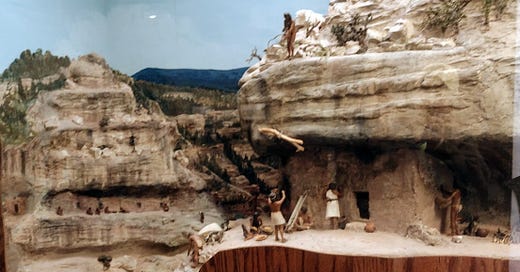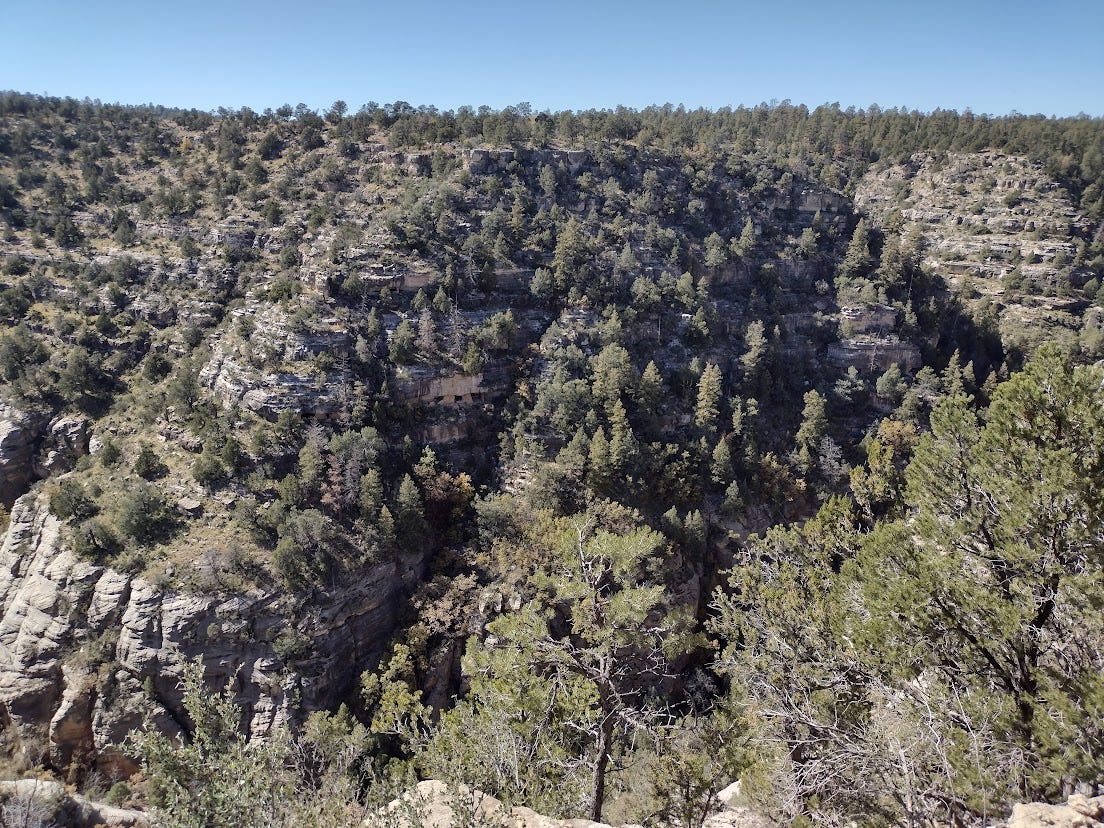Canyon Condo Living, Certified Green
ANNETTE ON THE ROAD A Spectacular Address, and Lessons in Sustainable Living, from 800 Years Ago
How Long Is This Post? Approx. 2900 words, plus photos, c. 15 minutes
Dear Nonnie Friend,
I’m a historian of the 18th century, so in the archives, I was lucky to scrape together enough documents to tell a credible story. Writing history from the detritus of the past is rather like figuring out a complicated jigsaw puzzle when you still have many missing pieces. I envy colleagues in 20th century US and British history for their abundant flow of documents. But I wouldn't want their problem: They work with an easier, more familiar puzzle, but they have thousands of pieces to sift through.
Still, I have done archival research in 20th century history, so it’s not a total mystery to me, not like today’s subject when I encountered it last month. That’s not necessarily a bad thing, mind: My recent brushes with a past without documents, like Albuquerque's petroglyphs, are exciting, and I feel myself getting hooked. Maybe they appeal to me because, on some deep level, I’m secretly worried that I might eventually get to know modern US and UK history too well, and that the facts that its historians reveal will eventually cease to amaze me.
If I were to get into such a rut (which I very much doubt, but still) , how could I get out of it? Since, like most proper historians, I take a dim view of flighty and fashionable “theory” as an alternative when facts are hard to find, that's not likely the answer. The only alternative, it seems to me, would be to . . . . Get more interested in other countries’ modern histories. Yay! So that’s all right then. A past without paper documents, though… Tempting.
After all, not having much evidence does offer room for the imagination to soar! Rather like fiction! Have I told you what fun it was to turn from writing academic history to historical time travel? No footnotes! I could make things up! Without being shackled to documents, there’s room to speculate! To let one’s fancy fly free! Indeedy, I could hardly . . . .
Oh, blast. I forgot beardy archaeologists and their little pot shards. They’re like clay fragment whisperers, always going on about how much artifacts speak to them. Hardly better, if you ask me, than wretched paleontologists, who get ahold of one chipped dinosaur tooth, then pay some artist to reconstruct an entire alleged dinosaur from it, which gets on the TV, and opens the funding floodgates to the kind of money historians can't even imagine. Not that I'm jealous. Or anything.
Wait, where was I? Oh, yes. A past without documents that nonetheless has enough beardy archaeology evidence to tell a story that interests me? For the first time, I've become aware that this is a possibility.
Learning that Grand Canyon's traditional name among Indigenous people is “Mountain Turned Upside Down”, and that people have long lived on the Canyon rim, caught my attention.
When I learned that, not far from Grand Canyon, there's a smaller canyon (well, it could hardly be bigger, could it?), where people had made homes in the canyon sides, well . . . I was definitely not wanting to miss that. Cliff condos are cool.
Behold the Stunning View of Desirable Condo Residences!
Confused by this photo? I sympathize. At first, this just looks like a bunch of boring old scenery, doesn’t it? Cliffs, trees, rocks, a dry Southwestern landscape, set in a twenty-mile long crack in the earth.




